The Cisco Certified Network Associate (CCNA) certification stands as a globally recognized benchmark for foundational networking skills, serving as a critical launchpad for careers in information technology.1 For aspiring network engineers, administrators, and IT specialists, achieving this credential is a pivotal step. However, success in this rigorous examination begins not with memorizing subnetting charts or routing protocols, but with a deep, strategic understanding of the exam’s structure itself. A comprehensive grasp of the test’s blueprint, question formats, and logistical framework is the true first step toward certification. This report provides a definitive, fact-based breakdown of every component of the CCNA 200-301 exam, designed to equip candidates with the strategic intelligence required to prepare effectively and succeed.
The Cisco CCNA 200-301 exam is a 120-minute test containing approximately 100 to 120 questions. The structure is based on six core, weighted knowledge domains and features a mix of question types, including multiple-choice, drag-and-drop, and hands-on performance-based labs, to validate both theoretical knowledge and practical skills.2 This multifaceted approach ensures that certified individuals are not only familiar with networking concepts but can also apply them in real-world scenarios.5
While the high-level numbers provide a basic outline, the nuances contained within the exam’s content domains, the variety of question formats, and the strict administrative procedures are what truly define the challenge and determine a candidate’s readiness. Understanding the specific weightings of each knowledge domain allows for the creation of an efficient study schedule, while familiarity with the question types prepares a candidate for the cognitive demands of the test. This guide will now transition from a broad overview to a granular analysis, offering a deep dive into the strategic intelligence needed to deconstruct, prepare for, and ultimately conquer the CCNA 200-301 exam.
Blog Claim: A granular understanding of the CCNA exam’s structure is not just helpful—it is a prerequisite for creating an efficient study plan, managing time effectively on exam day, and passing on the first attempt.
Table of Contents
What Are the Core Content Domains and Their Weightings?
The single most important document for any prospective CCNA candidate is the official exam blueprint published by Cisco.3 This document is not merely a list of suggestions; it is a definitive roadmap that explicitly details the subject matter covered on the test. More importantly, it assigns a specific percentage weighting to each content area, providing a clear and unambiguous guide to the exam’s focus. Structuring a study plan around this blueprint is the most effective way to align preparation efforts with the actual evaluation criteria, ensuring that time and energy are allocated in direct proportion to each domain’s importance.
The CCNA exam is structured around six core knowledge domains: Network Fundamentals (20%), Network Access (20%), IP Connectivity (25%), IP Services (10%), Security Fundamentals (15%), and Automation and Programmability (10%).2 These domains collectively cover the full spectrum of skills required for modern, associate-level networking roles.
A detailed examination of the official blueprint reveals the depth and breadth of knowledge required for success. The percentage weightings are a direct communication from Cisco, signaling the relative importance of each topic area. For instance, with IP Connectivity assigned the highest weight at 25%, candidates should logically dedicate the largest portion of their study time to mastering routing concepts, including static routing and OSPF.3 In contrast, IP Services and Automation, each at 10%, require a solid understanding but less comprehensive mastery than the core routing and switching topics. This hierarchical structure means that an effective study plan is not one that covers all topics equally, but one that is strategically weighted to mirror the exam’s own priorities.
Furthermore, the blueprint reflects the evolution of the network engineering profession. The inclusion of a dedicated 10% domain for “Automation and Programmability” is a significant departure from older versions of the CCNA, which were more heavily concentrated on traditional routing and switching.7 This change, introduced with the 200-301 exam version, consolidates previous specialized tracks and establishes a new baseline for the industry.1 It signifies that Cisco and the broader IT industry now consider foundational knowledge of controller-based networking (e.g., Cisco DNA Center), REST APIs, and configuration management tools like Ansible, Puppet, and Chef to be essential skills for an
associate-level engineer.1 The modern network professional is no longer expected to operate solely through manual command-line interface (CLI) configuration. Instead, they must understand how to function within a more automated, programmable, and software-defined network environment. This makes the CCNA 200-301 certification a validation of skills that are directly relevant to contemporary networking challenges. The following table provides the complete, granular breakdown of the official exam blueprint, serving as an essential checklist for any serious study plan.
| Domain Number & Title | Official Weighting (%) | Key Topics Covered 3 |
| 1.0 Network Fundamentals | 20% | – Role and function of network components (Routers, L2/L3 switches, NGFW, APs, Endpoints, Servers). – Characteristics of network topology architectures (Two-tier, Three-tier, Spine-leaf, WAN, SOHO, On-premise vs. cloud). – Physical interface and cabling types (Copper, Fiber, Ethernet). – Interface and cable issue identification (Collisions, errors, duplex mismatch). – Comparison of TCP and UDP. – IPv4 addressing and subnetting configuration and verification. – Need for private IPv4 addressing. – IPv6 addressing and prefix configuration and verification. – IPv6 address types (Global unicast, Unique local, Link-local, Multicast). – Wireless principles (Wi-Fi channels, SSID, RF, encryption). – Virtualization fundamentals (Server virtualization, containers, VRFs). – Switching concepts (MAC learning and aging, frame switching/flooding). |
| 2.0 Network Access | 20% | – Configuration and verification of VLANs spanning multiple switches. – Configuration and verification of interswitch connectivity (Trunk ports, 802.1Q, Native VLAN). – Layer 2 discovery protocols (CDP, LLDP). – Configuration and verification of Layer 2/Layer 3 EtherChannel (LACP). – Rapid PVST+ Spanning Tree Protocol operations. – Cisco Wireless Architectures and AP modes. – Physical infrastructure connections of WLAN components (AP, WLC, access/trunk ports). – Network device management access (SSH, HTTPS, console, RADIUS/TACACS+). – Wireless LAN GUI configuration for client connectivity. |
| 3.0 IP Connectivity | 25% | – Interpretation of routing table components (Prefix, network mask, next hop, administrative distance, metric). – Router forwarding decision process (Longest prefix match, administrative distance, metric). – Configuration and verification of IPv4 and IPv6 static routing (including default and floating static routes). – Configuration and verification of single area OSPFv2 (Neighbor adjacencies, Router ID). – Purpose and concepts of first-hop redundancy protocols (e.g., HSRP). |
| 4.0 IP Services | 10% | – Configuration and verification of inside source NAT using static and pools. – Configuration and verification of NTP in client/server mode. – Role of DHCP and DNS within the network. – Function of SNMP in network operations. – Use of syslog features, including facilities and levels. – Configuration and verification of DHCP client and relay. – Explanation of forwarding per-hop behavior (PHB) for QoS. – Configuration of remote access using SSH. – Capabilities of TFTP/FTP in the network. |
| 5.0 Security Fundamentals | 15% | – Definition of key security concepts (Threats, vulnerabilities, exploits, mitigation). – Security program elements (User awareness, training). – Device access control using local passwords. – Security password policies (Management, complexity). – IPsec remote access and site-to-site VPNs. – Configuration and verification of access control lists (ACLs). – Configuration and verification of Layer 2 security features (DHCP snooping, Dynamic ARP Inspection, Port Security). – Authentication, Authorization, and Accounting (AAA) concepts. – Wireless security protocols (WPA, WPA2, WPA3). – WLAN configuration using WPA2 PSK via the GUI. |
| 6.0 Automation and Programmability | 10% | – Impact of automation on network management. – Comparison of traditional vs. controller-based networking. – Description of controller-based and software-defined architectures (overlay, underlay, fabric). – Separation of control plane and data plane. – Northbound and Southbound APIs. – Comparison of traditional device management vs. Cisco DNA Center enabled device management. – REST-based APIs (CRUD verbs, data encoding). – Configuration management mechanisms (Puppet, Chef, Ansible). – Interpretation of JSON encoded data. |
Sub-heading claim: Mastering the official exam blueprint is the single most critical step in structuring an effective CCNA study plan.
What Question Types Can You Expect on the CCNA Exam?
The CCNA 200-301 exam is engineered to be a robust and comprehensive assessment of real-world competency. To achieve this, it moves beyond simple knowledge recall by employing a variety of question formats designed to test a candidate’s practical, hands-on skills and problem-solving abilities.5 A candidate’s performance is evaluated not just on what they know, but on what they can
do. This approach ensures that the certification is a true measure of an individual’s readiness to handle the dynamic challenges of modern network environments.
The CCNA exam features a mix of question formats, primarily multiple-choice (both single and multiple answer), drag-and-drop, and performance-based labs (simulations). Crucially, there is no option to go back to previous questions, and partial credit for incorrect answers is not officially guaranteed.2 This structure demands confidence, decisiveness, and a deep understanding of the material.
The variety of question types on the exam directly influences the optimal study methodology. The heavy emphasis on practical application means that theoretical study alone—such as reading textbooks or watching video courses—is fundamentally insufficient for success. The exam’s structure compels candidates to engage in extensive hands-on practice. An effective study regimen must incorporate significant time using network simulation tools like Cisco Packet Tracer, virtualization platforms such as GNS3 or EVE-NG, or physical lab equipment.5 The CCNA is a certification of
doing, not just knowing, and the question formats reflect this philosophy.
A detailed look at each question type reveals the specific skills being tested:
- Multiple-Choice (Single & Multiple Answer): This is the most traditional question format, designed to test theoretical knowledge of networking concepts, protocols, and standards.9 Questions may require a single correct answer or, more challengingly, multiple correct answers from a list of options. These questions assess a candidate’s ability to recall and differentiate between key technical details.
- Drag-and-Drop: This interactive format typically requires a candidate to match items to their correct descriptions or place a series of steps in the correct operational sequence.2 For example, a question might ask to match protocol names with their corresponding port numbers or to order the steps for configuring an EtherChannel link. This format tests an understanding of processes, relationships, and procedural logic.
- Performance-Based Labs (Simulations/Lablets): These are the most complex and heavily weighted questions on the exam, with candidates typically encountering between two and five per test.14 It is critical to understand that these are not simple, limited-functionality simulators. Cisco now uses advanced virtualization technology, meaning candidates are presented with a real, fully functional IOS command-line interface (CLI) within a virtualized network environment.15 They are given a specific task—such as configuring a router, troubleshooting a connectivity issue, or implementing a security feature—and are graded on their ability to successfully complete it. These “lablets” are the ultimate test of hands-on skill and are a far more realistic and demanding experience than the simulators used in older exam versions.
The question of partial credit on the CCNA exam is a subject of much discussion and ambiguity. Officially, Cisco does not disclose its specific scoring model.16 This has led to conflicting reports from test-takers. Some forum discussions suggest that partial credit is awarded for multi-part questions, such as selecting two out of three correct answers in a multiple-choice question or correctly completing some, but not all, tasks in a lab.18 However, other reports, including a statement from a Cisco Learning Network moderator, indicate that for multiple-choice and drag-and-drop questions, there is no partial credit; the question must be answered perfectly to receive any points.17 This ambiguity is likely a deliberate element of the testing strategy. By not guaranteeing partial credit, the exam structure discourages guessing and pushes candidates to aim for complete accuracy. This tests not only their knowledge but also their confidence in that knowledge. For any candidate, the safest and most effective strategy is to prepare with the assumption that no partial credit will be awarded and to answer questions only when reasonably certain of the complete, correct solution.
Sub-heading claim: Success on the CCNA requires proficiency across multiple question formats, with a heavy emphasis on practical skills demonstrated in lab simulations.
What Are the CCNA Exam’s Logistical Details, Like Duration and Question Count?
Beyond mastering the technical content and various question formats, every CCNA candidate must be prepared for the administrative and logistical framework of the exam itself. The strict time constraints, the volume of questions, and the unyielding forward-only progression of the test are critical factors that define the testing experience. A failure to appreciate and prepare for these logistical challenges can undermine even the most technically proficient candidate. Effective time management and a clear understanding of the exam’s operational rules are, therefore, essential components of a comprehensive preparation strategy.
The CCNA 200-301 exam has a fixed duration of 120 minutes.3 The number of questions is not fixed and varies per exam, but typically falls within the range of 100 to 120 questions.4 This structure requires candidates to maintain a steady pace, answering, on average, more than one question per minute.
The 120-minute time limit is a non-negotiable constant for all candidates.1 Within this two-hour window, the number of questions presented can fluctuate. While official documentation and training providers often cite a range of 100-120 questions 4, real-world candidate reports provide a more nuanced picture, with specific exam instances containing numbers such as 103 22 or a slightly lower range of 85-100 questions.23 This variability is not random; it is directly linked to the number and complexity of the performance-based labs on a given exam. Because labs are significantly more time-intensive than multiple-choice questions, an exam instance with three or four complex labs will necessarily have a lower total question count to remain completable within the 120-minute timeframe.4 Conversely, an exam with only two simpler labs can accommodate a higher number of traditional questions. Understanding this inverse relationship is crucial for managing test-day anxiety. A candidate who encounters a complex lab early in the exam should not panic about the time consumed, but rather recognize that this likely means they will face fewer total questions overall.
Perhaps the most significant logistical policy of the CCNA exam is that there is no “back” button.10 Once an answer is submitted and the candidate moves to the next question, the previous question cannot be revisited, reviewed, or changed. This policy has a profound psychological and strategic impact. Unlike many other standardized tests that allow candidates to flag difficult questions and return to them later, the CCNA forces a linear progression. This design choice elevates the importance of deep, foundational knowledge and reduces the viability of second-guessing. It tests a candidate’s ability to be decisive and confident in each answer before committing to it. This mirrors the demands of a real-world networking role, where an engineer must often make a confident decision based on the available information and then move on to the next task. The exam, therefore, is assessing not just technical knowledge, but also a professional’s ability to commit to a solution under pressure.
Sub-heading claim: Effective time management is crucial, as candidates must navigate over 100 questions, including complex labs, within a strict two-hour window without the ability to review past answers.
How Much Does the CCNA Exam Cost and How Do You Register?
The final phase of preparing for the CCNA certification involves navigating the practical, real-world steps of investing in and scheduling the exam. This requires a clear understanding of the direct costs, potential additional investments in training materials, and the official registration process. Proper financial planning and meticulous adherence to administrative procedures are crucial to ensure a smooth and successful exam day experience.
The standard fee for the CCNA 200-301 exam is $300 USD, plus applicable taxes. Registration is managed exclusively through Cisco’s official testing partner, Pearson VUE, and can be scheduled for an in-person test center or an online proctored session.24
While the $300 exam fee is the mandatory price of admission, it represents only one component of the total potential investment. A candidate who budgets only for the exam fee is likely under-resourcing their preparation efforts. The true cost of certification often includes a variety of highly recommended, if optional, study materials. These resources are critical for building the deep knowledge and hands-on skills required to pass on the first attempt. A comprehensive financial plan for the CCNA should therefore account for these additional investments. This reframes the cost from a simple fee to a strategic project budget aimed at career advancement. The total investment can often be two to five times the base exam fee, but this upfront expenditure significantly increases the likelihood of a successful outcome and a positive return on investment through enhanced career opportunities.24
| Cost Component | Price Range (USD) 24 |
| Exam Fee (Mandatory) | $300 |
| Exam Prep Books (Official Cert Guides, etc.) | $5 – $80 |
| Online Courses / Bootcamps | $200 – $4,500 |
| Practice Exams (e.g., Boson ExSim) | $63 – $254 |
| Lab Equipment / Virtual Lab Access | $50 – $1,250 |
| Recertification (every 3 years) | $300 – $400 |
The official registration process is standardized and managed entirely through Pearson VUE. The step-by-step process is as follows:
- Navigate to the Cisco certification landing page on the Pearson VUE website.26
- Create a new Pearson VUE web account or log in to an existing one. This account is necessary for scheduling and managing all Cisco exams.29
- From the exam catalog, select the 200-301 CCNA: Implementing and Administering Cisco Solutions exam.
- Choose the desired exam delivery method. Candidates can opt for an in-person exam at a local Pearson VUE Authorized Test Center or select the OnVUE online proctored option to take the exam from home or another private location.26
- Select an available date and time from the schedule.
- Complete the payment process using a credit card or a pre-purchased exam voucher.29
Finally, it is imperative that candidates understand that administrative preparedness is as important as technical preparedness. The integrity of the certification is protected by strict testing policies that must be followed without exception.30 A candidate with perfect technical knowledge can still be disqualified and forfeit their exam fee for failing to comply with these rules. Key policies include:
- Identification: Candidates must present a valid, unexpired, government-issued photo ID. The name on the ID must exactly match the name used during registration.30
- Testing Environment: For both in-person and online exams, no personal items are allowed in the testing area. This includes phones, notes, bags, and watches. For online proctored exams, the workspace must be clean and clutter-free, and the candidate must be alone in a private room for the duration of the test.30
This second layer of testing assesses a candidate’s professionalism, attention to detail, and ability to follow strict protocols—all valuable traits for any IT professional.
Sub-heading claim: While the base exam fee is fixed, candidates should budget for additional preparation resources to maximize their chances of first-attempt success and view the total cost as a career investment.
Conclusion
The structure of the Cisco CCNA 200-301 exam is a multifaceted and meticulously designed challenge that extends far beyond a simple test of technical recall. It is a comprehensive evaluation that assesses a candidate’s theoretical knowledge, practical hands-on skills, critical thinking, time management under pressure, and procedural discipline. The exam’s architecture—from its weighted content domains and diverse question formats to its strict logistical constraints—is precisely what imbues the CCNA certification with its esteemed value and global recognition within the IT industry.
A thorough analysis of the exam structure reveals several core strategies that are essential for success:
- Blueprint-Guided Study: The official Cisco exam blueprint is the definitive guide. Candidates must use the specified domain weightings to strategically allocate their study time, focusing most heavily on IP Connectivity (25%) and ensuring comprehensive coverage of Network Fundamentals and Network Access (20% each), while building solid competency in Security, IP Services, and Automation.
- Prioritization of Hands-On Labbing: The presence of realistic, performance-based lab questions using virtualized IOS means that theoretical study is insufficient. A successful preparation plan must be built around a foundation of consistent, practical lab work using tools like Cisco Packet Tracer, GNS3, or physical hardware.
- Adaptive Time Management: The combination of a 120-minute time limit, a high volume of questions, and the “no back button” policy demands a focused and decisive approach. Candidates must practice pacing themselves to handle over 100 questions, including time-intensive labs, without the safety net of a final review.
- Meticulous Administrative Preparation: The strict registration and testing center policies are not mere formalities; they are part of the evaluation. Ensuring that identification is correct, understanding the rules of the testing environment, and arriving prepared are critical steps to prevent an administrative failure on exam day.
Ultimately, the rigorous and demanding structure of the CCNA exam should not be viewed as a barrier, but as a crucible. It is designed to forge and identify individuals who possess the well-rounded skill set, practical abilities, and professional demeanor required to excel in modern networking roles. By understanding and respecting this structure, candidates can transform their preparation from a simple study exercise into a strategic campaign for career advancement.
External links recommendations
- Cisco Learning Network: Official CCNA 200-301 Exam Topics – The definitive and most current source for the official exam blueprint, detailing all six knowledge domains and their specific objectives.3
- Pearson VUE: Cisco Certification Testing – The official and exclusive portal for scheduling, managing, and paying for the CCNA exam, for both in-person and online proctored options.26
- Cisco U: Free CCNA Training & Tutorials – A collection of official learning resources, including free training modules and tutorials, provided directly by Cisco to aid in exam preparation.32
- Cisco Certification Exam Policies – An essential resource detailing the candidate agreement, rules of conduct, ID requirements, and other policies that all test-takers must adhere to during the certification process.
Reference links:
- Everything you need to know about the CCNA certification | Cisco Certified Network Associate – Cybersecurity Guide, accessed August 26, 2025, https://cybersecurityguide.org/programs/cybersecurity-certifications/ccna/
- 2025 CCNA 200-301 Exam Syllabus Breakdown: A Comprehensive Overview, accessed August 26, 2025, https://www.certlibrary.com/blog/2025-ccna-200-301-exam-syllabus-breakdown-a-comprehensive-overview/
- CCNA Exam Topics – Cisco Learning Network, accessed August 26, 2025, https://learningnetwork.cisco.com/s/ccna-exam-topics
- How Many Questions Are on the CCNA 200-301 Exam in 2025? – SPOTO Blog, accessed August 26, 2025, https://cciedump.spoto.net/blog/how-many-questions-are-on-the-ccna-200-301-exam-in-2025_22690.html
- CCNA 200-301 Syllabus 2025: A Complete Overview – Exam-Labs, accessed August 26, 2025, https://www.exam-labs.com/blog/ccna-200-301-syllabus-2025-a-complete-overview
- CCNA 200-301 – Required Latest guide and syllables, accessed August 26, 2025, https://forum.networklessons.com/t/ccna-200-301-required-latest-guide-and-syllables/12756
- Exam Profile: Cisco 200-301 CCNA | | Pearson IT Certification, accessed August 26, 2025, https://www.pearsonitcertification.com/articles/article.aspx?p=2982442
- CCNA topics in official blueprint order – IT Networking Skills – WordPress.com, accessed August 26, 2025, https://itnetworkingskills.wordpress.com/2024/05/24/ccna-topics-official-blueprint/
- Different Question Types that you’ll find on Cisco Certification Exams, accessed August 26, 2025, https://www.extratechs.com.au/blog/different-question-types-on-cisco-certification-exams
- CCNA Exam Tips and Tricks – CISCONET Training Solutions, accessed August 26, 2025, https://www.cisconetsolutions.com/ccna-200-301-tips-and-tricks/
- ExSim-Max for Cisco 200-301 CCNA 356 Questions – Boson, accessed August 26, 2025, https://www.boson.com/practice-exam/200-301-cisco-ccna-practice-exam
- How many questions are on CCNA 200-301?, accessed August 26, 2025, https://www.ciscodumps.net/content/News/20240919/1005.html
- Know About The 7 Question Types On Cisco Certification Exams – Spoto, accessed August 26, 2025, https://cciedump.spoto.net/newblog/know-about-the-7-question-types-on-cisco-certification-exams.html
- How Many Simulation Questions in CCNA 200-301? – Cisco Learning Network, accessed August 26, 2025, https://learningnetwork.cisco.com/s/question/0D56e0000EBteFbCQJ/how-many-simulation-questions-in-ccna-200301
- What is the question formats in CCNA exam? – Cisco Learning Network, accessed August 26, 2025, https://learningnetwork.cisco.com/s/question/0D56e0000E3NLt5CQG/what-is-the-question-formats-in-ccna-exam
- Partial Credit – Cisco Learning Network, accessed August 26, 2025, https://learningnetwork.cisco.com/s/question/0D53i00000Kt7bkCAB/partial-credit
- ICND1 Points Question (NDA?) – Cisco Learning Network, accessed August 26, 2025, https://learningnetwork.cisco.com/s/question/0D53i00000Kt4Z6CAJ/icnd1-points-question-nda
- Exam on Monday question about exam rules : r/ccna – Reddit, accessed August 26, 2025, https://www.reddit.com/r/ccna/comments/mnolqu/exam_on_monday_question_about_exam_rules/
- Lets say in the exam, a question asks for 3 possible answers… : r/ccna – Reddit, accessed August 26, 2025, https://www.reddit.com/r/ccna/comments/2abvqn/lets_say_in_the_exam_a_question_asks_for_3/
- Taking CCNA Tomorrow – Cisco Learning Network, accessed August 26, 2025, https://learningnetwork.cisco.com/s/question/0D53i00000Kt1VWCAZ/taking-ccna-tomorrow
- Cisco CCNA 200-301 — Practice Tests – Crucial Exams, accessed August 26, 2025, https://crucialexams.com/exams/cisco/ccna/200-301/practice-tests-practice-questions
- Passed CCNA 200-301. Recommended Study Materials and Tips. – Reddit, accessed August 26, 2025, https://www.reddit.com/r/ccna/comments/jgylcp/passed_ccna_200301_recommended_study_materials/
- CCNA exam format – Reddit, accessed August 26, 2025, https://www.reddit.com/r/ccna/comments/1fhum5e/ccna_exam_format/
- CCNA Certification Cost – Everything You Need to Know (2025), accessed August 26, 2025, https://591cert.com/ccna-certification-cost/
- How Much Does CCNA Certification Cost? (2025) – Tutors, accessed August 26, 2025, https://tutors.com/costs/ccna-certification-cost
- Cisco Systems certification testing with Pearson VUE, accessed August 26, 2025, https://www.pearsonvue.com/us/en/cisco.html
- CCNA 200-301 Certification Exam Cost: Complete Breakdown in 2025 – Dumpsgate, accessed August 26, 2025, https://dumpsgate.com/ccna-200-301-exam-cost/
- Pearson VUE: Certification Exams & Testing, accessed August 26, 2025, https://www.pearsonvue.com/
- Exam Resources and Test Preparation – Pearson VUE, accessed August 26, 2025, https://www.pearsonvue.com/us/en/test-takers/resources.html
- Cisco OnVUE online testing information with Pearson VUE, accessed August 26, 2025, https://www.pearsonvue.com/us/en/cisco/onvue.html
- Pearson VUE – Cisco Systems, Inc. Policies | PDF | Identity Document | Test (Assessment), accessed August 26, 2025, https://www.scribd.com/document/515625753/Pearson-VUE-Cisco-Systems-Inc-Policies
- How to use the Cisco CCNA Blueprint for exam success! | CCNA Exam Topics – YouTube, accessed August 26, 2025, https://m.youtube.com/watch?v=W0MGLKxHk9M

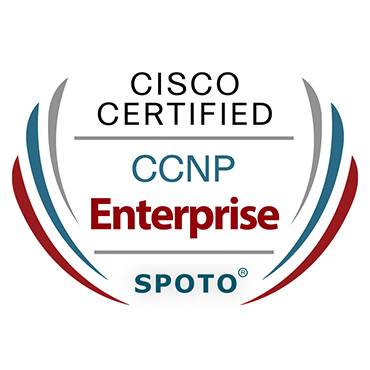
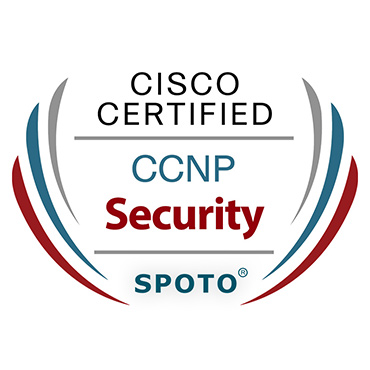

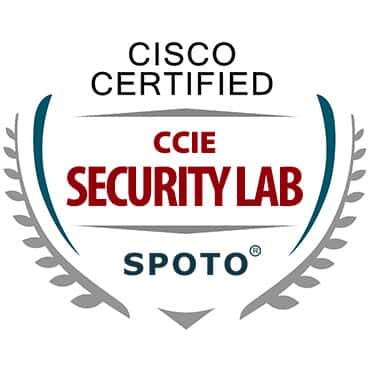
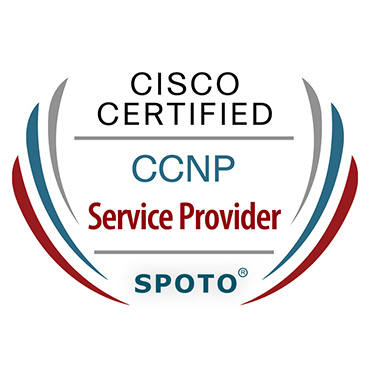

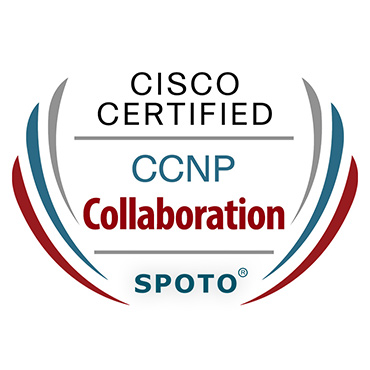
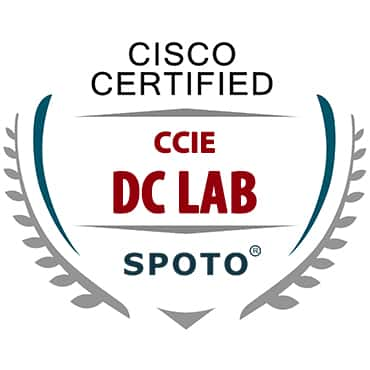


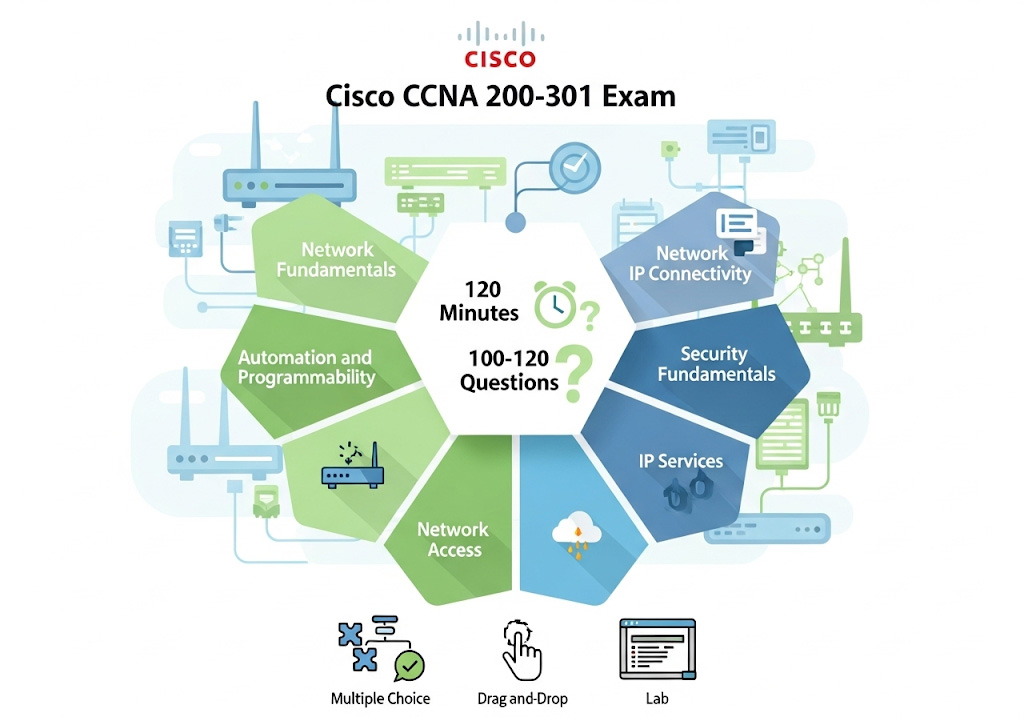
Comments